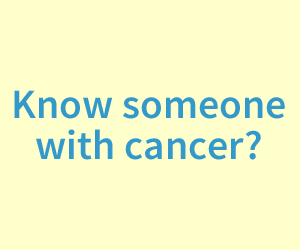Cancer immunotherapy comes of age
A few days ago, I was scanning google scholar for the latest research on checkpoint blockade immunotherapy. I found a good paper that explains the current state cancer advances in the field of immunotherapy, including recent advances in checkpoint blockade:
Here's a link to that journal paper entitled "Cancer Immunotherapy comes of Age"
Embedded within the paper was the following important point:
"Agents that act at the effector stage (for example, anti-PD-1 or inhibitors of immunosuppression) can only act by re-energizing the pre-existing T cells. Agents that act at the proliferation or activation stage (for example, ipilimumab) can probably enhance not only pre-existing responses but also de novo responses"
The practical implication for those seeking anti-PD1 trials (versus anti-CTLA4 trials or anti-CTLA4 off-label)—either you hope/bet that your immune system has already developed some spontaneous targeting, or else you try to achieve this targeting before going for anti-PD1—via cryoablation (my favorite), radiation, DC vaccination, peptide vaccination for example. In contrast, the paper implies that anti-CTLA4 may be able to generate this spontaneous recognition by itself. However, note that anti-CTLA4 is more toxic than anti-PD1.
Cryoablation is my favorite because of its own documented abscopal effect, whereby cryoablation to a local tumor can result in anti-metastatic regression of distant tumors. Going by the scientific model expounded by the paper, this implies that cryoablation not only results in DC recognition, but also protective T-cells, and possibly even a temporary systemic reduction of immunosuppressive factors (such as Regulatory T-cells). This abscopal effect of cryoablation is usually temporary, implying that at least the third component is short lived (i.e. short lived abrogation of immunosuppression). Hopefully combination therapy with checkpoint blockade will lead to durable responses (as has been recently seen with local radiation with checkpoint blockade).
I have only one beef with the paper - it credits Coleys Toxins as possibly working via innocent bystander effect. However, there is the possibility that a far more sophisticated response goes on with coleys whereby long lasting T-cell memory is developed (targeting of the cancer), along with some mechanism that overcomes the locally immunosuppressive tumor microenvironment. Dr. Old used to tell my wife and I he thought the latter was obtained primarily via lowering of Regulatory T-cells (the body cannot afford to allow Regulatory T-cells to be high when it thinks it's being invaded by bacteria, which Coleys fakes). Dr. Old certainly never wrote off Coleys and never assumed that the modern approaches (checkpoint blockade etc) are superior.
In truth, as it stands, Coleys is the only modality that has the benefit of time (120 yrs!) . . . whereby there are a multitude of documented cases of advanced sarcoma being cured and the patient alive 20, 30, 40 yrs later NED. I have been studying the sarcoma monographs and the majority of successful long term cures had a component of local injections directly into the tumor (which probably effected the T-cell memory targeting). Subsequent repeated systemic intramuscular administration away from the tumor conceivably served as a repeated lowering of Regulatory T-cells, perhaps similar in end-effect to what checkpoint blockade (anti-iCTLA4/anti-PD1) does.
*** Update 2017: Large advances in cancer immunotherapy have been made since we wrote this article. We have also published a book that seeks to encourage and empower cancer patients and caregivers regarding immunotherapy. For more information visit www.curingcancerbook.com



